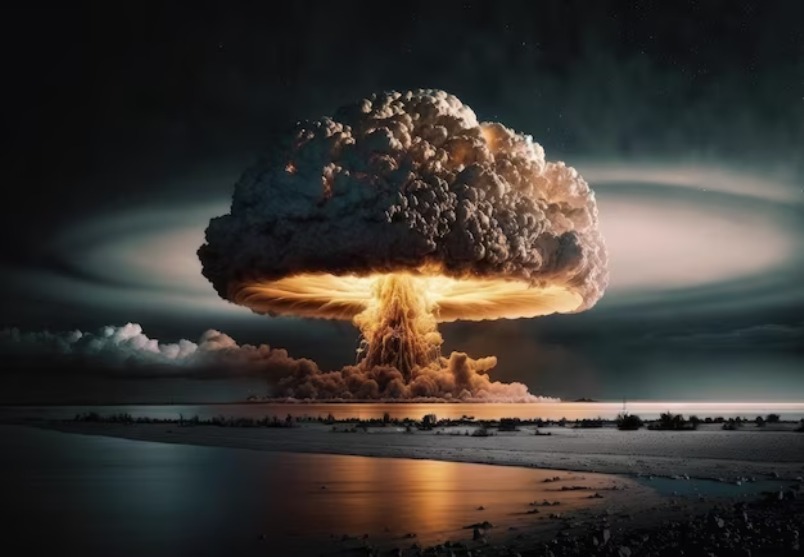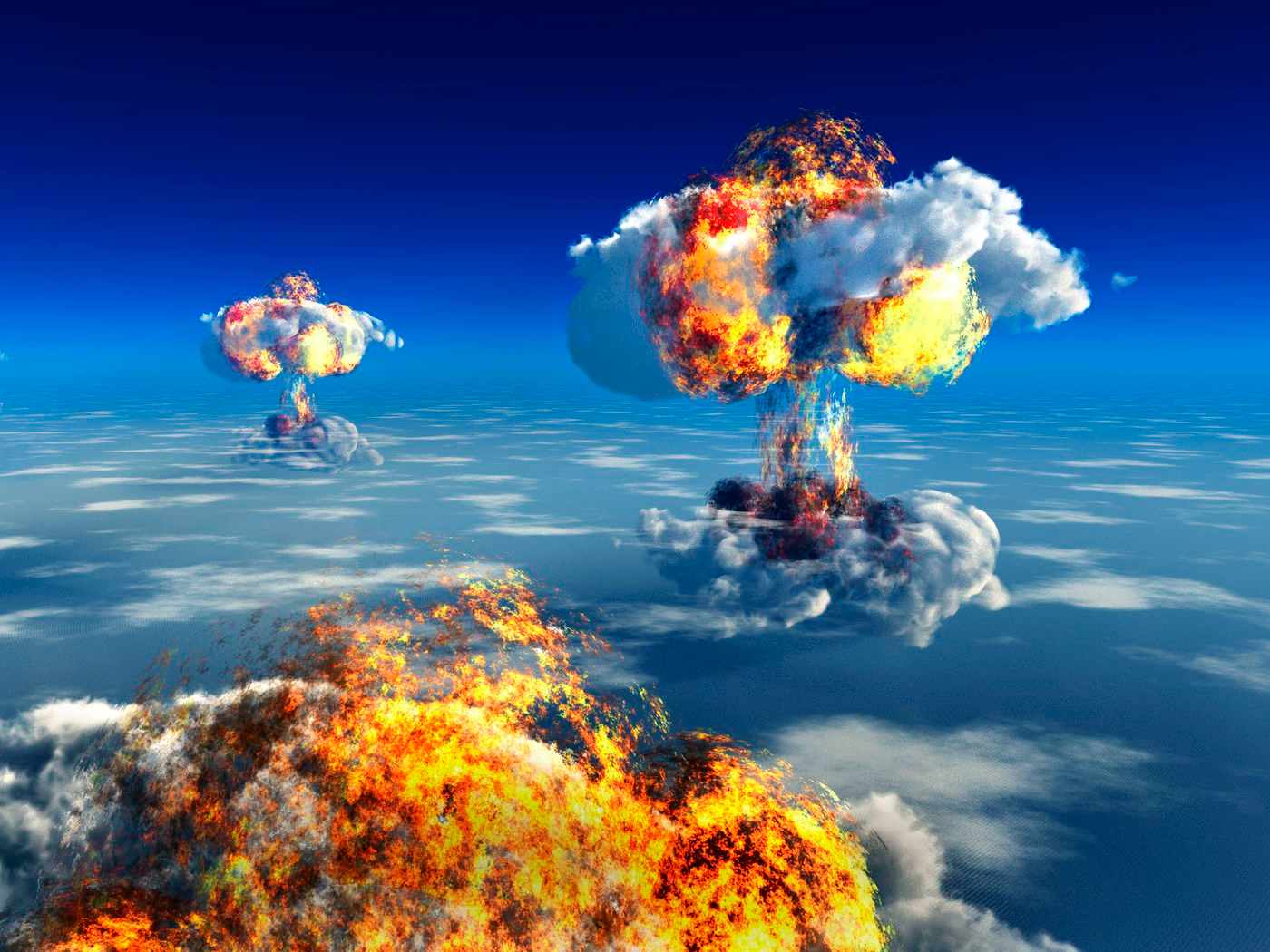The United States has once again sounded an alarm over Russia’s development of a satellite designed to carry nuclear weapons for anti-satellite operations, a move that could have catastrophic global consequences.
This revelation was highlighted in the US intelligence community’s 2025 Annual Threat Assessment report, published by the Office of the Director of National Intelligence (DNI) earlier this week.
A Dangerous Race In Zero Gravity
Imagine a weapon that doesn’t create a fireball, doesn’t generate a shockwave, but can instantly disable the invisible infrastructure that modern society depends on.
This is the nightmare scenario emerging from Russia’s latest space technology: a satellite potentially equipped with nuclear capabilities designed to unleash a catastrophic electromagnetic pulse (EMP) that could cripple global communications, navigation, and defense systems in an instant.
According to the report, Russia launched a satellite in February 2022, purportedly to test systems exposed to radiation and high-energy particles.
However, U.S. intelligence suggests a far more ominous purpose—potential nuclear weaponization in space. If detonated, such a weapon could wreak havoc on global infrastructure, disable commercial and military satellites, and threaten international security.
The potential ramifications are dire. A nuclear explosion in space wouldn’t create a fireball or shockwave due to the vacuum, but it would unleash a massive electromagnetic pulse (EMP) and high-energy radiation capable of crippling electronic systems across vast distances.

The United States and other nations that rely on satellite technology for communications, navigation, weather forecasting, and defense would face severe disruptions.
Growing Concerns In Washington
This report marks one of the first official acknowledgments by U.S. intelligence of a possible Russian space-based nuclear weapons program. While previous leaks hinted at its existence, the intelligence community had not publicly confirmed these suspicions until now.
The warning echoes concerns raised last winter by House Intelligence Committee Chairman Mike Turner, who cautioned of a “serious threat to national security.” The issue later surfaced in the media, with the White House confirming that it involved some form of anti-satellite weapon.
Several Pentagon officials have since cautioned about the potential devastation a nuclear explosion in space could cause.
While not directly confirming Russia’s involvement, Derek M. Tournear, head of the Space Development Agency, emphasized that such a detonation would destroy commercial, civilian, and military satellites, calling it “an attack on the world.”
In the spring, John F. Plumb, former assistant secretary of defense for space policy, elaborated on the threat during a congressional hearing.
He warned that a nuclear weapon in space could jeopardize all government and commercial satellites, as well as critical services related to communication, meteorology, agriculture, and national security.
Plumb also pointed out that satellites in low Earth orbit (LEO) are particularly vulnerable, as they lack protection against nuclear explosions. The impact would depend on the detonation’s altitude and location, but satellites in the affected zone would likely be destroyed.
He further estimated that a sufficiently powerful explosion in the right position could prevent the launch of new satellites into low orbit for up to a year.
Unlike on Earth, a nuclear explosion in space would not produce a shock wave or a fireball, as space lacks air to propagate these effects. Instead, the detonation would generate a massive electromagnetic pulse and high-energy radiation capable of damaging distant targets. Radiation in space also travels much farther than in the Earth’s lower atmosphere, amplifying its destructive potential.
The report also notes that Moscow actively uses both its own and foreign civil and commercial remote-sensing satellites to bolster its military capabilities. Additionally, Russia has warned that any commercial space infrastructure used for military purposes could be considered a legitimate target.

Russia’s Expanding Space Warfare Arsenal
The threat is part of a broader trend of Russia aggressively expanding its military space capabilities.
The country has been actively training forces and deploying advanced anti-satellite (ASAT) weapons to disrupt US and allied space assets.
The country is expanding its arsenal with advanced jamming systems, directed energy weapons (DEWs), and on-orbit counterspace technologies alongside ASAT missiles designed to destroy satellites critical for communication, navigation, and intelligence.
US intelligence indicates that Moscow has increasingly relied on electronic warfare (EW) tactics to counter Western satellite operations. Russia’s growing ASAT missile capabilities, capable of striking low Earth orbit (LEO) targets, further heighten fears over the militarization of space.
Challenges & Strategic Priorities
Despite its formidable Soviet-era space legacy, Russia’s ambitions have faced setbacks. The ongoing war in Ukraine has exposed vulnerabilities in its space infrastructure, exacerbated by Western sanctions, export controls, and internal challenges within its space sector. These constraints have made it difficult for Russia to sustain large-scale civil space projects.
However, while its civilian space efforts may struggle, Moscow appears poised to double down on its military space initiatives, which are vital to national security.
By prioritizing military space operations and commercial space projects, Russia seeks to maintain its strategic foothold beyond Earth’s atmosphere and solidify its role as a dominant space power.
A Global Wake-Up Call
This isn’t a story about a potential weapon—it’s a narrative about humanity’s technological interdependence and the delicate systems that sustain our modern existence. As nations like Russia push the boundaries of what’s possible in space, we’re forced to confront a fundamental question: Can we prevent technology from becoming the instrument of our own potential destruction?
As the threat of space-based warfare looms larger, the international community must confront the possibility of an arms race in orbit.
The potential deployment of nuclear weapons in space represents an existential threat not only to national security but to global stability and economic progress.
The US and its allies face an urgent challenge: strengthening space resilience, developing countermeasures, and pushing for diplomatic agreements that prevent the weaponization of space before it’s too late.
- Shubhangi Palve is a defense and aerospace journalist. Before joining the EurAsian Times, she worked for ET Prime. She has over 15 years of extensive experience in the media industry, spanning print, electronic, and online domains.
- Contact the author at shubhapalve (at) gmail.com




